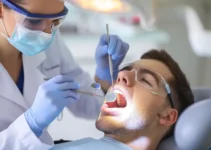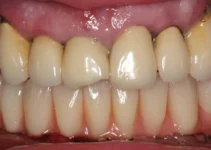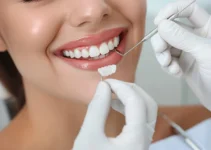Dealing with low ovarian response during IVF treatment can be challenging for both patients and fertility specialists. This condition, affecting approximately 15% of women undergoing IVF, occurs when the ovaries produce fewer follicles than expected in response to stimulation medications. Several strategies can enhance treatment outcomes, including personalized stimulation protocols, adjuvant therapies like growth hormone supplementation, and careful cycle monitoring. Understanding these options and working closely with a fertility specialist is crucial for developing an effective treatment approach tailored to individual needs.
Understanding Low Ovarian Response in IVF
Low ovarian response (LOR) represents a significant challenge in assisted reproductive technology, affecting approximately 9-24% of IVF patients worldwide. This condition occurs when the ovaries show a reduced response to gonadotropin stimulation during IVF treatment, resulting in fewer mature follicles and, consequently, fewer viable eggs for fertilization.
The impact of LOR on fertility treatment outcomes is substantial, with patients experiencing lower pregnancy rates and increased cycle cancellation rates. Studies have shown that women with poor ovarian response typically achieve pregnancy rates of only 2-4% per cycle, compared to 20-30% in normal responders.
Understanding and identifying LOR early in the treatment process is crucial for developing appropriate therapeutic strategies and managing patient expectations. The condition presents unique challenges that require personalized approaches and potentially modified treatment protocols.
Definition and Diagnosis
The Bologna criteria, established by the European Society of Human Reproduction and Embryology (ESHRE), provides standardized parameters for diagnosing poor ovarian response. To be classified as a poor responder, a patient must meet at least two of the following conditions:
- Advanced maternal age (≥40 years) or other risk factors for POR
- Previous poor ovarian response (≤3 oocytes with conventional stimulation)
- Abnormal ovarian reserve tests
Key diagnostic markers include Antral Follicle Count (AFC) and Anti-Müllerian Hormone (AMH) levels. An AFC below 5-7 follicles or AMH levels under 1.1 ng/mL are generally indicative of diminished ovarian reserve and potential poor response.
Modern clinics also consider additional parameters such as ovarian volume, blood flow patterns, and previous response to ovarian stimulation to create a comprehensive diagnostic picture.
Causes and Risk Factors
The etiology of low ovarian response is multifactorial, with age being the primary determinant. Women over 35 experience a natural decline in both egg quantity and quality, significantly impacting their response to stimulation protocols.
Genetic factors play a crucial role, including variations in FSH receptor genes and FMR1 gene premutations. Research has identified several genetic markers associated with poor ovarian response, helping clinicians predict and manage treatment outcomes more effectively.
Medical conditions that can contribute to LOR include:
- Endometriosis
- Previous ovarian surgery
- Autoimmune disorders
- Chemotherapy or radiation exposure
- Chronic smoking
Environmental factors and lifestyle choices can also impact ovarian response, including exposure to environmental toxins, stress levels, and body mass index (BMI).
For more detailed information about improving fertility outcomes and understanding various treatment options, we encourage you to explore our related articles on ovarian stimulation protocols and advanced reproductive technologies.
Treatment Protocols for Low Responders
Managing patients with poor ovarian response requires a tailored therapeutic approach. Treatment protocols have evolved significantly over the years, incorporating various strategies to optimize follicular development and oocyte quality. The key to success lies in identifying the most suitable protocol based on individual patient characteristics. Recent advances in reproductive medicine have introduced innovative protocols that combine different therapeutic approaches. These include the use of growth hormone supplementation, androgens, and specialized stimulation protocols. Studies have shown that personalized treatment strategies can significantly improve outcomes in poor responders.
The integration of PRGF-Endoret® technology has emerged as a promising adjuvant therapy, particularly for its ability to reduce inflammation and promote tissue regeneration. This advanced treatment modality may enhance ovarian response when combined with traditional stimulation protocols.
Conventional Stimulation Protocols
Traditional protocols typically involve high-dose gonadotropin stimulation, with doses ranging from 300 to 450 IU daily. The rationale behind this approach is to maximize the recruitment of available follicles. Key components of conventional protocols include:
- Long GnRH agonist protocol with estrogen priming
- Short GnRH antagonist protocol
- Microdose flare protocol
- Sequential stimulation approaches
The choice between GnRH agonist and antagonist protocols depends on various factors, including patient age, AMH levels, and previous response to treatment. Studies have shown that antagonist protocols may offer advantages in terms of reduced duration of stimulation and lower gonadotropin consumption.
Incorporating growth factors and specialized plasma preparations like PRGF-Endoret® into conventional protocols has shown promise in improving follicular development and reducing fibrosis, potentially enhancing treatment outcomes.
Novel Approaches
Modern treatment strategies have introduced several innovative approaches to address poor ovarian response. The DuoStim protocol, also known as double stimulation in the same cycle, has shown encouraging results by maximizing the number of oocytes retrieved in a single menstrual cycle.
Minimal stimulation protocols, utilizing lower doses of gonadotropins combined with oral medications, offer a more gentle approach. These protocols often incorporate:
- Clomiphene citrate or letrozole with low-dose gonadotropins
- Modified natural cycle IVF
- Specialized growth factor supplementation
- Personalized PRGF-Endoret® treatment protocols
The integration of regenerative medicine techniques, particularly the use of platelet-rich growth factors, has opened new possibilities in treating poor responders. These approaches focus on improving ovarian tissue quality and reducing inflammatory responses.
Natural cycle IVF, while yielding fewer oocytes, may be suitable for specific patient groups. This approach minimizes medication use and focuses on quality rather than quantity, particularly beneficial when combined with advanced laboratory techniques.
For more detailed information about specific treatment options and the latest advances in reproductive medicine, we encourage you to explore our related articles on ovarian rejuvenation techniques and personalized fertility treatments. Understanding these options will help you make informed decisions about your fertility journey.
Adjuvant Therapies and Supplements
In recent years, the field of reproductive medicine has seen significant advances in understanding how various adjuvant therapies can enhance ovarian response during IVF treatment. These interventions are particularly valuable for patients with diminished ovarian reserve or those who have experienced previous failed IVF cycles.
The integration of growth factors and regenerative medicine has revolutionized the approach to improving ovarian response. Platelet-rich plasma (PRP) therapy, particularly the PRGF-ENDORET® technology, has shown promising results in tissue regeneration and reducing inflammation in the ovarian environment.
Research indicates that a personalized combination of medical and nutritional interventions can significantly improve treatment outcomes. The key lies in selecting the appropriate adjuvant therapy based on individual patient characteristics and specific fertility challenges.
Medical Adjuvants
DHEA (Dehydroepiandrosterone) supplementation has emerged as a valuable intervention, with studies showing its effectiveness in improving egg quality and quantity. The recommended protocol typically involves taking DHEA for 2-3 months before starting IVF treatment.
Growth hormone (GH) supplementation has demonstrated significant benefits, particularly in:
- Enhancing follicular development
- Improving egg quality
- Increasing pregnancy rates in poor responders
- Reducing the required dosage of gonadotropins
Androgen supplementation, particularly testosterone, has shown promise in optimizing follicular sensitivity to FSH stimulation. This approach is especially beneficial for patients with diminished ovarian reserve, though careful monitoring is essential.
Nutritional Supplements
Evidence-based research supports the use of specific nutritional supplements to enhance reproductive outcomes. Coenzyme Q10 has demonstrated significant benefits in improving mitochondrial function and egg quality, particularly in women over 35. Key supplements that have shown promising results include:
- Melatonin for its antioxidant properties
- Vitamin D for improved implantation rates
- Omega-3 fatty acids for reducing inflammation
- Myo-inositol for improving egg quality
The integration of antioxidant supplements has shown particular promise when combined with PRGF-ENDORET® therapy, as they work synergistically to reduce oxidative stress and promote tissue regeneration.
For more detailed information about specific fertility treatments and personalized approaches to improving ovarian response, we encourage you to explore our related articles on advanced reproductive technologies and innovative fertility solutions.
Optimizing IVF Laboratory Procedures
The management of low ovarian response cases requires specialized laboratory procedures to maximize the potential of every retrieved oocyte. Modern IVF laboratories implement sophisticated protocols that combine advanced culture systems with precise monitoring techniques to optimize outcomes for patients with few eggs.
The integration of time-lapse technology and artificial intelligence has revolutionized the way embryologists handle cases with limited oocytes. These technological advances allow for continuous monitoring without disturbing the delicate culture environment, which is particularly crucial when working with a reduced number of embryos.
Recent studies have demonstrated that implementing personalized culture conditions based on individual patient characteristics can significantly improve embryo development rates. This includes adjusting oxygen levels, temperature parameters, and culture media composition to match specific requirements.
Advanced Laboratory Techniques
For patients with poor ovarian response, laboratories employ specialized handling protocols that minimize exposure time during crucial procedures. The implementation of PRGF-ENDORET® technology has shown promising results in improving oocyte quality through its regenerative properties.
Key laboratory modifications for poor responders include:
- Minimal manipulation techniques
- Specialized culture media formulations
- Reduced oxygen tension systems
- Individual embryo culture approaches
The application of growth factor-enriched media supplements has demonstrated enhanced embryo development rates in multiple clinical studies. These advanced protocols are particularly beneficial for cases with limited oocyte numbers.
Embryo Selection Strategies
When working with a limited number of embryos, the selection process becomes critically important. Modern laboratories utilize comprehensive embryo assessment techniques that combine morphological evaluation with advanced metabolomic and genetic screening methods.
The implementation of artificial intelligence-based selection tools has significantly improved the accuracy of embryo grading. These systems analyze thousands of data points to identify the most viable embryos, which is particularly valuable when working with few options.
Recent developments in non-invasive embryo evaluation techniques have provided new insights into embryo viability. These include:
- Time-lapse morphokinetic analysis
- Spent media analysis
- Artificial intelligence-based scoring systems
- Metabolomic profiling
If you found this information valuable, we encourage you to explore our related articles on advanced reproductive technologies and personalized treatment approaches in IVF. Understanding these cutting-edge techniques can help you make informed decisions about your fertility treatment journey.
Alternative Options and Future Directions
For patients experiencing poor ovarian response during IVF treatment, medical science has developed several alternative approaches. The advancement of reproductive technology has opened new doors for those struggling with fertility challenges, particularly through innovative treatments like PRGF-Endoret® technology, which utilizes growth factors to potentially enhance ovarian response.
Recent studies have shown promising results with personalized protocols that combine traditional IVF approaches with regenerative medicine. The use of platelet-rich growth factors has demonstrated potential benefits in reducing inflammation and promoting tissue regeneration, which may improve follicular development and overall treatment outcomes.
Alternative Treatment Options
When conventional IVF protocols don’t yield desired results, several well-established alternatives are available:
- Egg Donation: A highly successful option with pregnancy rates exceeding 50% per transfer
- Embryo Adoption: Provides both genetic material and a chance for pregnancy
- Fertility Preservation: Proactive approach through egg freezing at a younger age
- Modified Natural Cycle IVF: Less medication-intensive approach
The success rates of these alternatives vary, but they often provide viable pathways to parenthood for those who haven’t succeeded with traditional IVF. Each option comes with its own considerations and should be discussed thoroughly with a fertility specialist.
Emerging Technologies
The field of reproductive medicine is witnessing exciting developments in treating poor ovarian response. PRGF-Endoret® technology represents a significant advancement, offering personalized solutions through its closed system protocol developed by BTI Biotechnology Institute.
Research indicates that growth factors derived from platelets can potentially:
- Reduce ovarian tissue inflammation
- Decrease fibrosis development
- Promote follicular regeneration
- Enhance overall ovarian function
Ongoing clinical trials are exploring additional promising technologies, including stem cell therapy, mitochondrial transfer, and advanced genetic screening methods. These innovations could potentially revolutionize treatment approaches for poor responders in the coming years.
If you’re interested in learning more about fertility treatments and emerging technologies, we encourage you to explore our related articles on ovarian rejuvenation techniques and personalized medicine approaches in reproductive care. Stay informed about the latest developments in fertility treatment to make the best decisions for your journey.
Understanding Poor Ovarian Response in IVF Treatment
When dealing with low ovarian response during IVF treatment, many patients have questions about how to improve their chances of success. Here’s what you need to know about using advanced techniques like PRGF-ENDORET® technology.
How can PRGF-ENDORET® technology help improve IVF outcomes in patients with poor ovarian response?
PRGF-ENDORET® technology represents a breakthrough in treating low ovarian response by using the patient’s own growth factors. This closed system, developed by BTI Biotechnology Institute, processes blood plasma to obtain an optimal concentration of proteins and growth factors. These elements help reduce inflammation, decrease tissue fibrosis, and potentially stimulate ovarian follicle regeneration. The treatment is completely personalized for each patient’s specific condition, which can significantly improve the chances of successful IVF outcomes in women with poor ovarian response.




